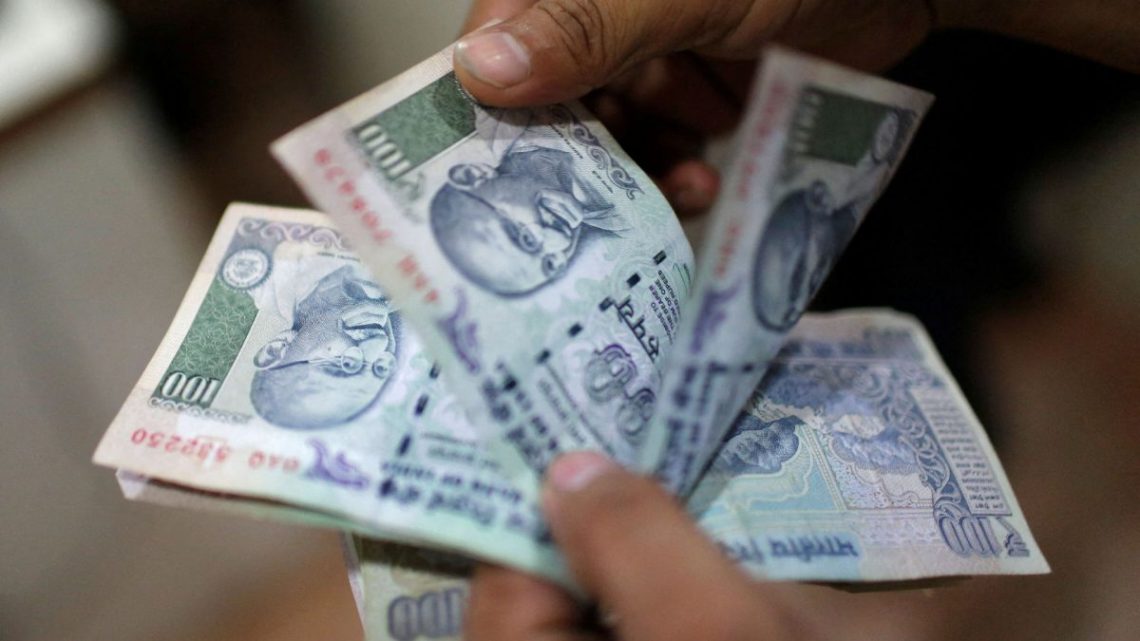The Indian rupee on Monday fell to a lifetime low of 86.31 against the US dollar in early trade as the American currency continued to gain strength ahead of Donald Trump’s inauguration on January 20.
Also, the Indian benchmark indices — BSE Sensex and Nifty 50 tanked on Monday morning, due to a combination of domestic and volatile global factors that dampened the investors’ sentiments.
The INR on Friday (January 10) declined 18 paise to settle at 86.04 against the US dollar. On Monday, at the interbank foreign exchange, the rupee opened at 86.12 and fell to the historic low level of 86.31 against the dollar in initial deals, registering a steep loss of 27 paise from its previous close.
1 – Surge in crude oil price: Forex traders, quoted by news agency PTI, said that the rupee came under intense pressure after a significant surge in crude oil prices, sustained outflow of foreign capital and a negative trend in domestic equity markets.
Brent crude, the global oil benchmark, surged 1.44 per cent to $80.91 per barrel in futures trade.
2 – Positive US job data: A strengthening dollar, which got a fillip after better-than-expected job growth in the US market, also weighed on the Indian rupee.
In the US, employers added 256,000 jobs in December, far exceeding the 160,000 jobs economists had predicted in a Reuters poll. The unemployment rate, meanwhile, dropped to 4.1 per cent.
The positive US job data has also fuelled the benchmark treasury yields amid expectations of slower interest rate cut by the Federal Reserve.
3 – FIIs pull out from capital markets: Foreign institutional investors continue to pull out money from the Indian market which has further impacted the INR. As per exchange data, FIIs offloaded Rs 2,254.68 crore in the capital markets on a net basis on Friday, according to exchange data.
The dollar index which gauges the greenback’s strength against a basket of six currencies, meanwhile, was trading up 0.22 per cent to its over two-year-high level of 109.72. The 10-year US bond yields remained elevated touching its October 2023 level at 4.76 per cent.
Also on Friday, the Reserve Bank of India (RBI) said that the country’s forex reserves dropped by $5.693 billion to $634.585 billion in the week ended January 3.
The BSE Sensex and Nifty 50 also opened in red and were trading down in the early hours. Stocks of real estate, financial services and consumer durables dragged the Indian stock market down today.
Around 9:15 am, Nifty fell 1.01 per cent to 23,195.4 points, while Sensex was trading down 0.97 per cent at 76,629.9.
The stock market fell tracking global cues. Most Asian stocks declined due to favourable US employment data, whilst oil reached four-month highs amidst new Russian sanctions.
“The market remains under strain, with even minor pullbacks attracting selling pressure. As the earnings season kicks off, erratic market swings are likely to intensify,” Senior Vice President at Religare Broking, Ajit Mishra, was quoted as saying by Moneycontrol.
“In the absence of any clear signs of a trend reversal, particularly in the banking index, traders are advised to use rebounds as shorting opportunities. Caution should remain a priority, with a focus on robust risk management,” Mishra said.
With inputs from agencies.
Link to article –
Indian rupee falls to lifetime low of 86.31 against dollar; Sensex, Nifty down: 3 factors

